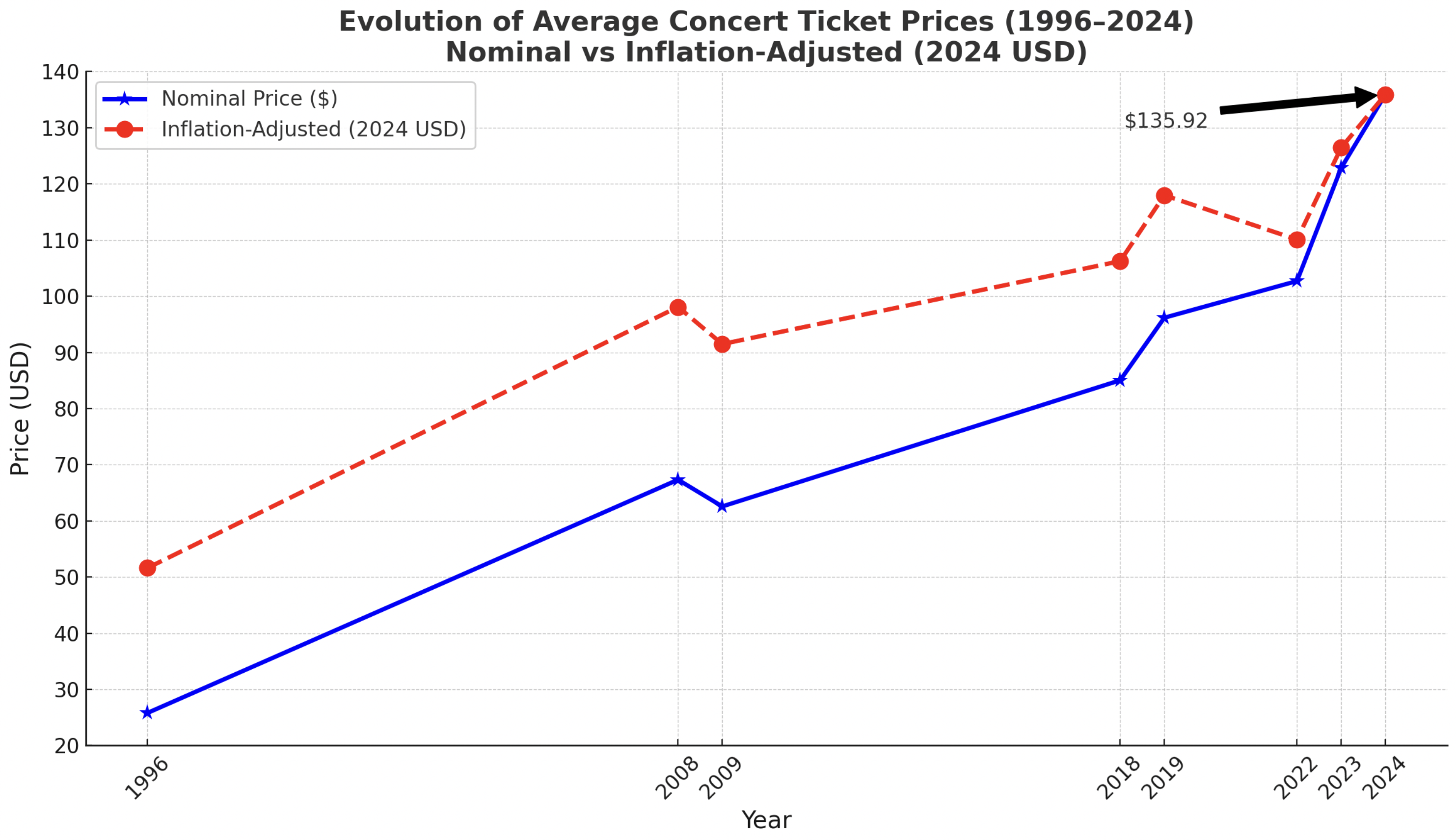The Evolution of Concert Ticket Prices: From One Shilling to $500+
Concerts have always been about more than just music—they reflect culture, economics, and technology. From the first ticketed performances in 17th-century London to today’s stadium mega-shows with dynamic pricing, the story of concert ticket prices is also a story about the evolution of live entertainment itself.
Today, ticket costs for major artists can soar well past $500—and that’s before the resale market gets involved. But how did we get here? Let’s trace the rise of ticket prices through history, from the earliest concerts to the post-pandemic boom.

🎻 17th–19th Centuries: The Birth of Public Concerts
First Ticketed Concert: 1672, London
Admission: 1 shilling (~19 today)
Audience: Middle-class music lovers
The earliest public concerts began as small, intimate gatherings—John Banister’s violin recitals at Whitefriars in London were among the first. In France, the Concerts Spirituels (1725) drew large crowds with sacred music, charging slightly more. These events democratized access to music but kept prices low relative to wages.
Key Fact: By the 1800s, even performances by superstars like Franz Liszt rarely topped $1 USD equivalent, thanks to patronage and subsidies.
🎷 20th Century: Live Music Becomes Pop Culture
| Decade | Nominal Avg. Price | Inflation-Adjusted (2025 USD) | Example |
|---|---|---|---|
| 1950s | 2 | 30 | Elvis Presley: $1.50 (1956) |
| 1960s | 6 | 55 | Beatles: 6 (1964) |
| 1970s | 10 | 60 | Rolling Stones: $8 (1972) |
| 1980s | 20 | 55 | Def Leppard: $20 (1988) |
| 1990s | 40 | 70 | Avg. $25.81 (1996) |
From Community Concerts to Mega-Tours
1950s–60s: Live music embraced mass appeal. Elvis charged $1.50 per ticket.
Woodstock (1969): 3 days for 150 today).
1970s Arena Rock: Tickets rose to $10 for icons like Pink Floyd.
Inflation played a role, but concerts remained affordable entertainment. By the 1980s, with stars like Michael Jackson and Madonna, prices edged higher—but adjusted for inflation, not dramatically so.
🎤 21st Century: The Big Business of Live Music
| Decade | Nominal Avg. Price | Inflation-Adjusted (2025 USD) | Key Trends |
|---|---|---|---|
| 2000s | 60 | 90 | Rise of mega-tours |
| 2010s | 90 | 110 | Dynamic pricing emerges |
| 2020s | $120+ | $120+ | Post-pandemic surge; 80.5% increase since 2021 |
The “Funflation” Era
Dynamic Pricing: Ticketmaster introduced AI-driven, real-time price adjustments in 2011.
Streaming’s Impact: With declining album sales, artists now rely on live shows for up to 70% of their income.
Resale Market: Platforms like StubHub normalize 100%+ markups.
By 2023, average global ticket prices topped $120, up nearly 80% since 2021. In the U.S., prices are often double those in Europe for comparable acts.
Example: Taylor Swift 2024: 500 face value, resale regularly $1,000+.
💸 Why Prices Keep Rising
It’s not just inflation. Here’s what’s driving the surge beyond standard economic shifts:
✅ Production Costs: Pyrotechnics, immersive visuals, and massive crews have driven post-pandemic costs up by 50%+.
✅ Demand > Supply: Legacy acts like The Rolling Stones and blockbuster tours (e.g., Taylor Swift) command top dollar from fans willing to pay.
✅ Dynamic Pricing: Algorithmic pricing maximizes profits on popular dates.
✅ Resale & Scalping: Secondary markets exacerbate the hike—sometimes adding 20–100% on top.
🥁 From Shillings to “Funflation”: A 350-Year Journey
In the 1670s, a concert cost the modern equivalent of a coffee. In 2025, it could cost you a car payment—or several. Whether this is sustainable remains to be seen, but it’s clear: live music has shifted from affordable entertainment to a premium experience driven by demand, scarcity, and evolving business models.
🎧 Related Reads on Music Verse Media
👉 Track Review: Fisher – Blackberries
👉 Interview with Rising House Duo Bali
👉 The Rise of CRSSD Festival and the Fall Edition You Can’t Miss
